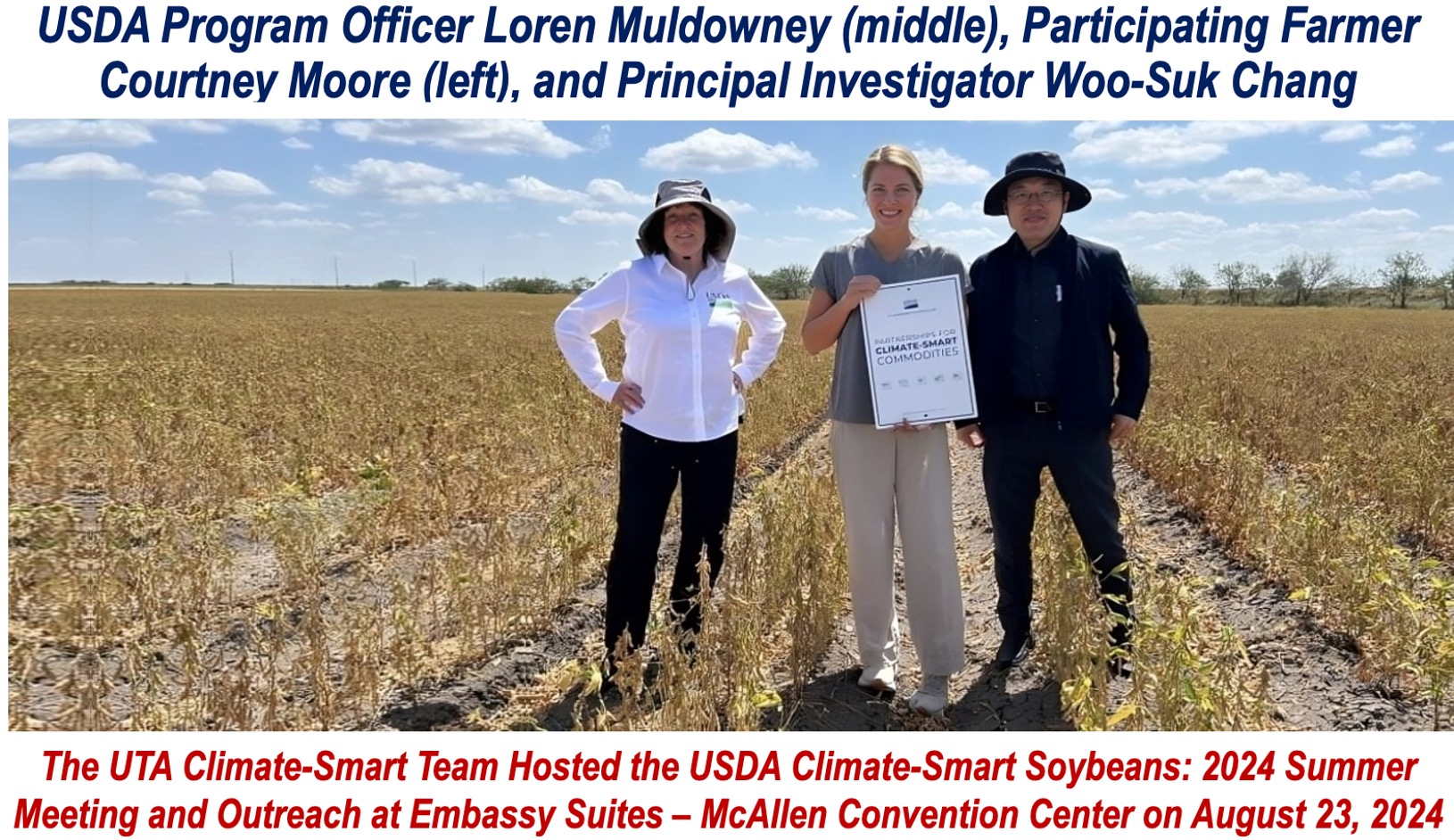Researchers from the University of Texas at Arlington (UT Arlington) have successfully harvested their first climate-smart soybean crop, marking a significant step in a $5 million USDA-funded project.
The initiative aims to reduce greenhouse gas emissions in farming while improving crop yields, addressing concerns about climate change.
UT Arlington biologist Woo-Suk Chang, who leads the project, explained:
“We are the first to harvest climate-smart soybeans in this program, in part because of the earlier growing season in South Texas. Most people don’t realize it, but farming activities make up about 10% of GHG emissions. We’re hoping to help the agriculture industry change that.”
The team, alongside collaborators from Texas A&M AgriLife, Tarleton State University, and the University of Missouri, is working with 14 farmers across three states—Texas, Arkansas, and Missouri.

Key Climate-Smart Practices
Below are the key climate-smart practices being tested:
-
Crop rotation
By switching out crops each season, farmers can avoid depleting the soil of key nutrients. This method helps maintain soil fertility and prevents the erosion often seen in fields where the same crop is grown year after year. The researchers are particularly focused on developing resilient soybeans that can handle droughts or heavy rainfall.
-
Cover crops
These are grown during off-seasons to restore nutrients and protect the soil. Various mixtures of plants are being tested to determine which combinations offer the most benefits for soil quality, including improved water retention and reduced erosion.
-
No-till agriculture
Traditional plowing methods can release stored carbon from the soil, contributing to emissions. By eliminating or minimizing soil disturbance, no-till farming helps preserve this carbon while improving the soil’s health and structure, leading to more sustainable agricultural practices.
-
Bio-inoculants
These beneficial microorganisms, such as bacteria or fungi, are added to the soil to naturally enhance plant growth and resilience. The trial is evaluating how well these microorganisms help soybeans resist extreme weather and pests, while also potentially reducing the need for chemical fertilizers.
-
Biochar
Biochar, a form of carbon produced by partially burning organic material, has the potential to improve soil health and sequester carbon. The application of biochar in this trial aims to lock in greenhouse gases and enhance the soil’s ability to retain moisture, all while increasing crop yields.
Eunsung Kan, professor of biological and agricultural engineering at Texas A&M AgriLife, said:
“Biochar would play a leading role in enhancing agricultural and environmental sustainability with climate change mitigation in soybean fields.”
Later This Year
As more crops are harvested later this year, the UT Arlington team will analyze the impact of these methods on both greenhouse gas emissions and crop productivity.
Data from portable gas analyzers will reveal how effective the techniques are in reducing emissions of carbon dioxide, methane, and nitrous oxide.
A Market for Climate-Smart Products
Another objective of the project is to create a market for climate-smart products, similar to the existing demand for organic goods.
If the pilot succeeds, the next steps will involve promoting these climate-smart products to a broader consumer base.
UT Arlington is already working with Texas Valley Grain to establish a market for these soybeans in South Texas, with the potential to expand into markets like Mexico.
Andrew Scott, an agricultural consultant and soybean expert in South Texas, highlighted the vision for these climate-smart products, noting:
“Just as consumers are willing to pay extra for organically grown products, we hope to create a marketplace where they will have a choice to support underserved farmers whose practices help reduce GHG emissions.”
Scott also compared this to the energy market, saying:
“We’re already seeing this trend in the energy market where consumers have a choice to select plans where much of the electricity comes from wind or solar. Our goal is to offer a similar choice when it comes to purchasing commodities.”
